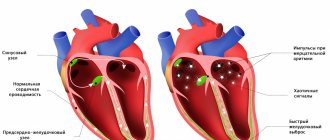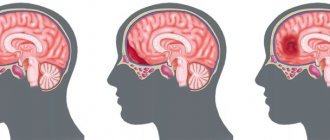What is alpha rhythm depression?
Electroencephalography (EEG) shows the alpha rhythm as a rhythmic wave in the cortex with a frequency range of 8-12 Hz. Unlike other frequencies, this wave has an unusual sinusoidal, smoother shape. From a physiological point of view, this means how inactive the visual system of the brain is; from a psychological point of view, it is a kind of connection between a person’s consciousness and the subconscious.
https://www.instagram.com/p/BxOnQ64npWj/
Alpha rhythm is often associated with inhibited brain activation. The greater the range of fluctuations in the indicator, the less the brain works in the area where it was recorded. The index has clearer indicators when examining the occipital and parietal regions, as well as the posterior wall of the temple.
Depression is the replacement of alpha with beta rhythm.
The meaning of the alpha rhythm for humans
For a person, the normal functioning of the alpha rhythm is extremely important, because responsible for the following brain actions:
- analysis of information received during the day;
- activation of the parasympathetic nervous system to restore the body's resources;
- normal cerebral circulation;
- stabilization of the limbic system;
- normalization of post-traumatic syndrome due to a stressful situation.
Disruption of the alpha rhythm can lead to alcohol or drug addiction. This disorder also causes excessive eating and bulimia, because... there is a failure in normalizing the basic needs of the body.
There is also incomplete depression, which provokes disruptions in the human cardiovascular system. Incomplete depression leads to a large number of negative thoughts and a person becoming fixated on some problems.
How does electroencephalography work?
Signal transmission in the human nervous system is carried out both chemically (using neurotransmitters) and electrically (action potentials). A single action potential or membrane voltage of a single neuron is too weak to be detected by non-invasive diagnostic methods. However, electrodes can detect the summation of synchronously occurring action potentials and make fluctuations in electrical activity visible.
There is a certain connection between a person’s mental state and EEG waves. Abnormalities or unusual brain waves may indicate pathology. A neurologist analyzes and describes such waves.
The electrodes measure activity in parts of the cerebral cortex that have a high density of nerve cells. However, an EEG measures not only the electrical potential of nerve cells in the brain, but also the muscles of the head and skin. Accordingly, fundamental EEG rhythms do not reflect precise neuronal activity. EEG rhythms and their relationship with the functional state of the brain are the subject of controversy in the scientific community.
Delta rhythms
EEG delta rhythms have a low frequency ranging from 0.1 to <4 Hz. Delta waves are typical functional waves of the deep, dreamless sleep phases. In infants, the delta rhythm is also present upon awakening.
Theta waves
Theta wave is a slow rhythm in the frequency range from 4 to <8 Hz. They are more common during drowsiness and dozing. EEG rhythms and their characteristics depend on the patient’s age. They are present in the waking state in children, but presence in adults may indicate brain dysfunction or damage.
Alpha waves
The normal alpha rhythm on the EEG has the following features:
- frequency 8-12 Hz: the lower limit of normal alpha rhythm in adults and children over 8 years of age is 8 Hz;
- location: occipital regions;
- morphology: rhythmic and regular;
- amplitude: usually 20-100 mV;
- reactivity: appears when the eyes are closed and disappears when they open.
Beta waves
The normal EEG beta rhythm has the following characteristics:
- Frequency (by definition) greater than 13 Hz.
- Location: diffuse distribution.
- Morphology: usually rhythmic and symmetrical.
- Amplitude: range 5-20 mV.
Reactivity: Beta activity increases during the first and second stages of sleep, and decreases in the deep phases. Central beta activity may be reactive to voluntary movements and proprioceptive stimuli.
Gamma waves
A gamma wave is a signal in the frequency range above 30 Hz. This rhythm occurs during strong concentration, during study or meditation. Recent studies have shown that the occurrence of gamma rhythms is necessary for the integration of various stimuli.
It should be noted that gamma rhythms are not visible on the EEG strip with the naked eye.
Possible reasons
Signs of pathological changes in fluctuations of this index in an adult patient are:
- asymmetry of the human brain hemispheres by more than 30%;
- violation of sine wave indicators;
- delta and theta rhythms;
- unstable parameters.
During an EEG study, fluctuations in the forehead area should be clearly visible when the eyes are opened, and should disappear when closed. If this does not happen, then there is a high probability that there is an injury in this place. Clear asymmetry of the hemispheres may be a sign of brain cancer or various lesions as a result of a heart attack or stroke.
These indicators may also indicate changes in the brain as a result of injury. If a malfunction is observed in children, this may be a sign of some kind of mental pathology. It is more difficult to determine fluctuations in children, because a small child cannot close or open his eyes on command.
The violation is a sign of the presence of epileptic brain damage, drug addiction, severe deviations of the organ hemispheres, and hypertension. High fluctuations indicate that the patient may have mental retardation.
Features of the EEG pattern in depression
In recent years, in connection with the development of electroencephalography, much attention has been paid to studies of bioelectrical activity in various functional states, including psychogenically caused ones. One of these pathologies is depression.
Depression is basically a disorder of emotions, the brain base of which is the limbic system and the old cortex. The main distinguishing signs of depression are mood disturbances (characterizing the internal emotional state) and affective (external) expressions. The physiological causes of this condition are a decrease in the regulatory function of the cerebral cortex and the promotion of pathological limbic-subcortical regulations to the first place.
The development of depressive states is accompanied by disturbances in the structure of all frequency ranges of the EEG. To a greater extent, these changes relate to changes in the basic rhythm of the EEG alpha rhythm (these are rhythmic oscillations mainly in the occipital and parietal cortex with a frequency of 8 to 13/sec and an amplitude of up to 30-70 μV; registration is carried out in a state of quiet wakefulness, with eyes closed and maximum muscle relaxation).
The alpha rhythm in depression can be significantly enhanced or, conversely, reduced, and the spatial distribution of the rhythm also changes. Changes in alpha activity in depression depend on the clinical picture of the disease.
Thus, an increase in the alpha rhythm index is characteristic of patients with “major depression”, and its decrease (a picture of a desynchronous EEG type with smoothed zonal differences and a predominance of faster potentials in the structure of polyrhythmic activity) is characteristic of dysthymic disorders.
During a functional test with opening and closing the eyes, a significantly smaller than normal decrease in the amplitude and power of the alpha rhythm is observed. that is, a decrease in the reactivity of the cerebral cortex. Against this background, there is an increase in the total power of the beta activity index in all areas of the brain. It is worth noting that the changes described above are not type-specific.
With the use of modern treatment methods (along with pharmacotherapy, biofeedback therapy, light therapy, and psychotherapeutic techniques are used), significant improvements are noted in both the psychophysiological and functional state of the patient.
| | Read more about new treatments for depression |
Do you need a consultation? Any questions? Call us
What to do?
Now there are a large number of methods for treating the disorder:
- medicinal;
- light therapy;
- psychotherapy.
Biofeedback therapy is quite common and involves constant monitoring of physiological parameters of the body over time. During the treatment course, physiological indicators are adjusted, for example, the functioning of the muscular system, blood circulation, and brain activity. This treatment allows people to cope with fears, panic attacks, and excessive muscle tension.
This method is most often used for headaches, spastic torticollis, stuttering, constantly shaking hands, high blood pressure, impotence caused by a psychological problem, and epilepsy.
Alpha rhythms in unusual areas
In children and young adults, alpha EEG activity can be detected in the occipital regions (O1, O2), parietal region (Pz) and in the sensorimotor zone (SZ, C4). However, the scalp distribution of alpha activity (especially in the eyes-open state) changes with age, and temporal alpha rhythms become prominent in older adults. Niedermeyer (1997) described a temporal alpha-like rhythm, found mainly in the anterior and midtemporal regions, characterized by mild abnormality, and suggested that it may be a sign of early cerebrovascular disorders. He also mentions that during puberty, this pattern, found in the temporal lobe, may obscure the focus of epileptogenesis. Rhythmic alpha activity may also mask rhythmic paroxysmal bursts without evidence of any acute components.
Figure 8. Case of abnormal localization of alpha-like rhythms
Top left: EEG fragment in the eyes-open state. Deviations from the norm of EEG spectra and corresponding topograms are presented. Below are sLORETA images of abnormal rhythm generators.
Our experience of working with healthy subjects and patients allows us to draw the following conclusion: if in an individual patient: 1) the maximum of rhythmic activity within the range of 7-13 Hz is localized in leads different from those mentioned for the norm, 2) the rhythm itself is so noticeable that there is a significant deviation from the norm in both absolute and relative power - then this rhythm can be considered abnormal. In our practice, the maximum distributions of abnormal alpha rhythms were found in the posterior temporal areas (for example, in connection with tinnitus or spinal injury), in the parietal areas of the left hemisphere (in connection with dyslexia), in the middle and anterior temporal areas (in connection with with age-related cerebrovascular disorders). Only in a few cases were abnormal alpha rhythms found in the frontal regions.
An example of the spectral characteristics of the EEG of a patient with abnormal alpha rhythms is presented in Fig. 8. The raw EEG recording shows two types of rhythms within the alpha frequencies: the first with a frequency of 9.5 Hz, located in the left middle temporal region, and the second with a frequency of 7.3 Hz, located in the Fz lead zone. The results of comparison with the normative database and sLORETA images are presented in Fig. 8 top right.
In general, changes in the normal functioning of thalamocortical pathways can result in a number of neurological disorders, such as epileptic seizures and tremor in Parkinson's disease, both of which have rhythmic components. Stimulation or destruction of the relevant part of the thalamus (for example, the ventral nucleus zones) is one of the accepted methods for alleviating tremor, apparently associated with the destruction of the rhythmic activity of thalamocortical networks. Abnormal rhythmic activity of thalamic cells (as shown in patients with implanted electrodes) can be observed in some neurological disorders associated with behavioral disorders that are not necessarily rhythmic in nature. For example, recordings of thalamic neuron activity in patients suffering from chronic pain as a result of sensory deafferentation (so-called phantom pain) demonstrate the presence of abnormal rhythmic bursts of action potentials. In this case, stereotactic lysis of the thalamic nuclei leads to a reduction in phantom pain.









